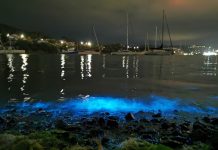BEIJING: Over 2,000 years ago, the Romans invented what we now know today as cement-based concrete. It is one of the world’s most crucial building materials, and is also the most prone to environmental risks.
With extensive exposure to air, rain and pollution, concrete structures tend to get dirty, discolored, and fractured. But scientists have found the future cement to help keep buildings safe.
Xu Xin, a professor at the University of Science and Technology of China, said, the material’s surface can absorb water. When people reduce cement’s ability to retain water, it becomes hydrophobic.
Hydrophobic literally means “fear of water.” Such surfaces exist in nature, from lotus leaves to insect wings. Their special structure and chemical make-up allow them to repel not only water, but also dust and pollutants.
Scientists have been able to emulate these super-hydrophobic surfaces in the lab, for application to daily items like clothes and shoes. At the core of these products is a highly water-repellent silicone polymer, known as PDMS.
“PDMS is an industrial product, which can be mass-produced and applied as a layer to protect surfaces,” Xu told CGTN. But how does PDMS polymer work to make an entire building water-repellent? It’s not as easy as slathering it on walls, as you would with paint, because top layers would get worn away over time.
What if PDMS is mixed with cement? “If you mix it with cement or completely cover a building with PDMS, there wouldn’t be many problems, such as equal distribution. The aggregation of PDMS can lead to cracks instead,” Xu added.
So how can we effectively get PDMS polymer into concrete? Professor Xu said the “perfect carrier” for this water-resistant substance is oil. But many of us know that oil and water don’t mix.-The Daily Mail-Global Times news exchange item






